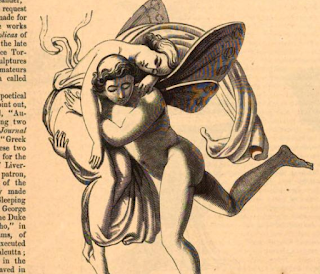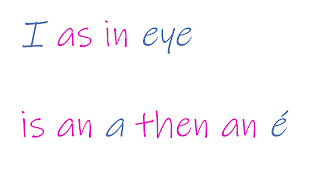. It was first performed in 1622 and is said to be the work of William Rowley, either solely or in partnership with others. However, the 1662 first edition of the play claims it to be the work of William Rowley
William Shakespeare. Placing it in the
- a list of works once attributed to William Shakespeare, but since deemed to be the work of other authors.
To recap, I started working my way through these apocrypha plays quite a few years ago. In fact, my last post on the topic was way back in 2014, when I read The Merry Devil of Edmonton.
Re-reading some of these old posts a week or so ago inspired me to pick up where I left off.
I made a list of the those I'd read and those I hadn't, and started with the one at the top of the unread pile; that being this one. Fittingly it turned out that I'd read ten and still had ten left to go. So my very long break was stopped in the perfect place really. (Though it should be noted that the below list isn't necessarily a definitive list, as there are many 'lost' plays, apocryphal poems, etc that could be included).
Read;
Unread;
- The Birth of Merlin
- The Two Noble Kinsmen
- Edward III
- The Second Maiden's Tragedy
- Fair Em, the Miller's Daughter of Manchester
- Edmund Ironside
- Sir Thomas More
- Thomas of Woodstock
- The Spanish Tragedy
- A Knack to Know a Knave
So ..the Birth of Merlin
Normally when I read these plays there are three things I note. Firstly, simply whether I enjoyed it or not - which is always pretty much a yes to some degree. Including with this one. Secondly, does it feel like a Shakespeare? Or rather, is there anything that would suggest to me it wasn't one? Then thirdly, I make a note of any other little interesting things that spring out from the text.
As for the enjoyment; it was a really fun play. Especially the comedic scenes featuring an unnamed 'clown' and his sister Joan Go-to't, the pregnant mother-to-be of Merlin.
For context the play is set as the Britons are fighting the Saxons. Whilst that is going on Joan Go-to't and Clown are wandering around looking for the man who has impregnated her, whose identity she amusingly has no idea of. It probably sounds a little geeky describing the play as 'amusing', however it really is quite comical. Not just the usual ha-ha funny in a pretentious "I get Shakespeare jokes" type of way, but in a genuine occasional burst of laughter type of way.
Basically all the scenes featuring Clown and Joan Go-to't play upon the idea that she's a harlot, for want of a better word. So the puns and putdowns are quite funny, in a daft, sitcom kind of way. In fact, the name Go-to't is another play upon this. Go to it being a synonym for having sex, as in how we would say go at it.
Incidentally, it turns out that the father of the child is the Devil, and when Merlin is born he's born fully grown, replete with a beard. Again, it's all quite absurd and deliberately silly.
Did Shakespeare have a hand in it?
As for the question of authorship I saw no reason to think it wasn't in part the creation of Shakespeare. It felt very much like a Shakespeare stylistically. Of course, I have little experience of other plays from this period, so perhaps everything from this era would feel Shakespearean to me. The only other plays I've read from around this time being those of Christopher Marlowe, which do feel very different, at least to my untrained senses. So my instincts naturally say "Yes, this could be from the same hand", but my general ignorance makes me wary of making a firm judgement.
When posting about the previous apocrypha plays all those years back I noted a few commonalities. Firstly, they seem much more likely to be set in England - see plays like A Yorkshire Tragedy and The London Prodigal in the above list for example. Then secondly they tend to be a bit more vulgar and bawdy, i.e. more obviously lowbrow. A bit common we could say.
The Birth of Merlin tends to fit this mould too. It's British based, and, as the above-referenced scenes with Miss Go-to't testify, it's a little bit innuendo laden.
My general feeling has always been that a lot of these plays are excluded from the Shakespeare cannon by scholars due to a certain amount of snobbery. Or rather a wish to sanctify Shakespeare in gilded perfection. Plays set in Venice or Verona have the air of educated high art. Saucy plays about English harlots don't quite have the same dizzying allure. So I think there's a tendency to say "Uh, this couldn't possibly be Shakespeare." Purging the cannon of anything that appears too unrefined.
Of course, as I've noted in earlier posts on here Shakespeare generally is a bit bawdy anyway. So it's not that out of keeping really.
However, if a bit of sexual innuendo requires a grasp of the French language to understand it, then that seems to get a pass. Whereas straight up common parlour English, not so much.
Again, these are just my opinions though. Plus it should also perhaps be noted that these apocrypha works aren't included in the 1623 'First Folio' collection of Shakespeare works. Which is a major, and logical reason for scholars to exclude them.
As a side note, from the above list both Pericles, Prince of Tyre and The Two Noble Kinsmen are now generally accepted as being by Shakespeare, even though they're not contained within the First Folio.
Interestingly both these plays are set on foreign shores. Taking place in famed ancient cities such as Tyre, Tarsus, and Athens. This in some way supports my theory that plays set amidst lofty surroundings are more likely to be accepted as genuine. At some point I should perhaps list all the works along with their location to see if the data actually bears this idea out.
Stonehenge - Merlin's Bower
Finally. (I've went on quite long haven't I. I promise in future these reviews will be much shorter. That long break has given me a bit too much recapping to do this time round it seems.)
Anyway ..finally. I'll share a few interesting little passages that jumped out at me.
This first one is spoken by Merlin, where he discusses building Stonehenge as a burial place to his mother. (Imagine that, Stonehenge being a mausoleum for a harlot!!).
I thought it was quite a curious little explanation for the landmark.
In fact, with reference to Merlin's whoring mother, there's actually a stone circle in Cornwall called The Merry Maidens, and in old English merrymaids was once a name for mermaids. Which as we've noted before was often used as a euphemism for prostitute. So though the following backstory for Stonehenge is quite imagined and unorthodox, it could be the case that it's clinging on to some loose vines of tradition.
Merlin. [..] and Ile conduct you to a place retir'd,
which I by art have rais'd, call'd Merlins Bower,
there shall you dwell with solitary sighs,
with grones and passions your companions,
to weep away this flesh you have offended with,
and leave all bare unto your aierial soul,
and when you die, I will erect a Monument
upon the verdant Plains of Salisbury,
no King shall have so high a sepulchre,
with pendulous stones that I will hang by art,
where neither Lime nor Mortar shalbe us'd,
a dark Enigma to the memory,
for none shall have the power to number them,
a place that I will hollow for your rest,
Where no Night-hag shall walk, nor Ware-wolf tread,
Where Merlins Mother shall be sepulcher'd.
Lastly, I'll share these few little lines, spoken by the character Artesia, which impressed me with their poetry for some reason;
Artesia. Come, come, you do but flatter, what you term Love, is but a Dream of blood, wakes with enjoying, and with open eyes forgot, contemn'd, and lost.
A PDF version of the 1662 publication can be found here;
For anyone wanting a slightly more readable version the text can be found here too;















































